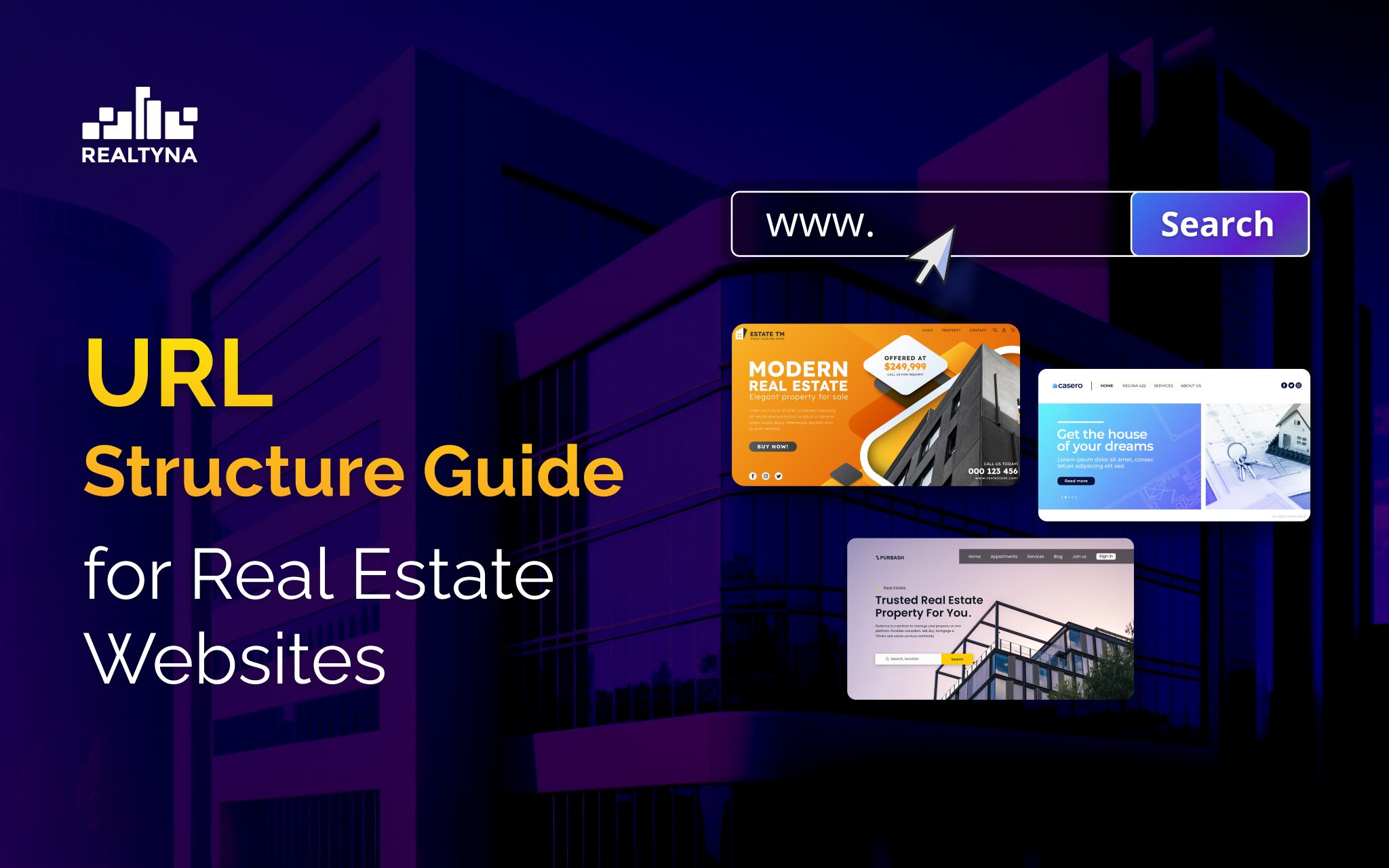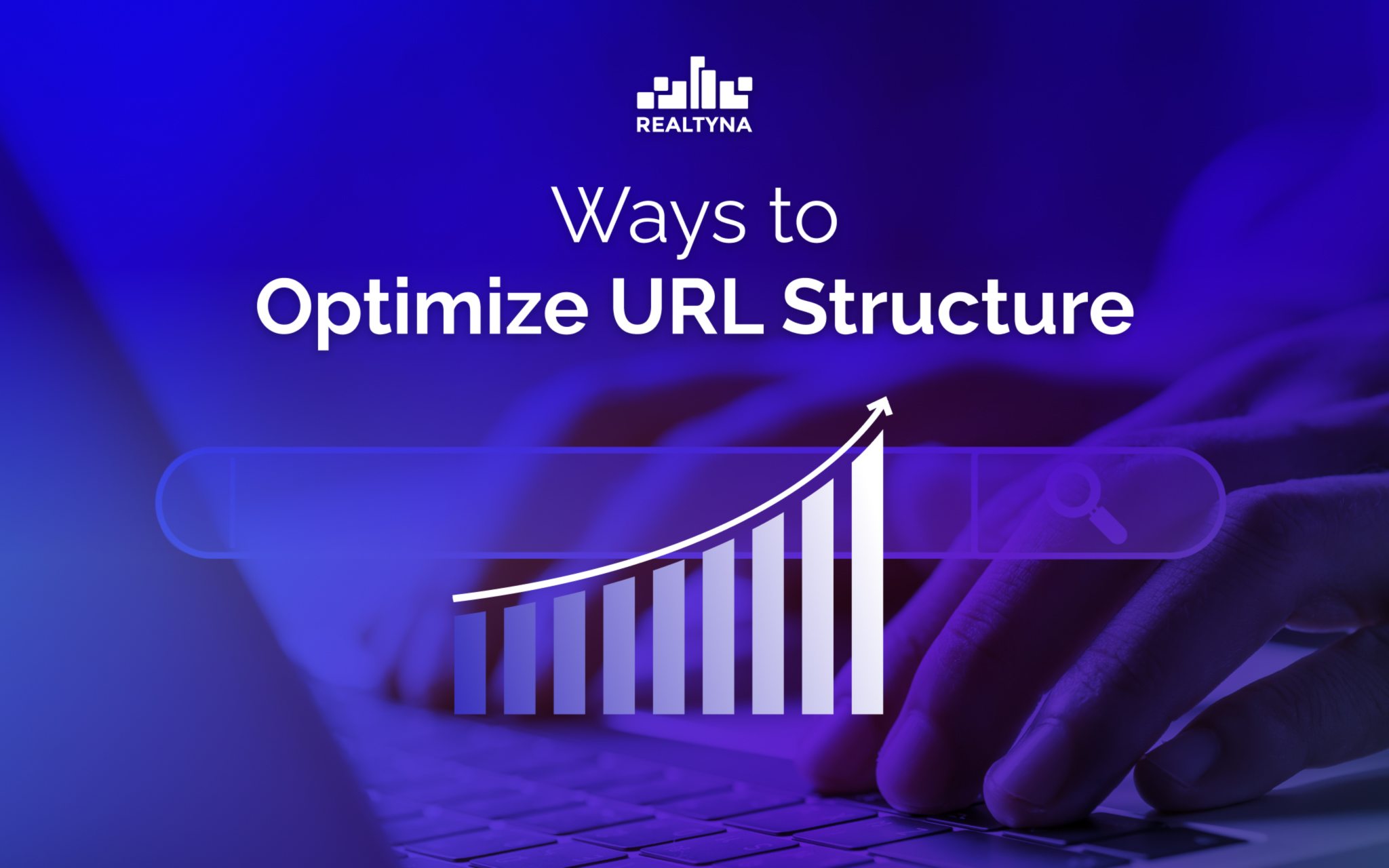You are viewing our site as a Broker, Switch Your View:
Agent | Broker Reset Filters to Default Back to ListHow to Structure URLs for Your Real Estate Website: A Guide
January 25 2024
 Welcome to the world of real estate website URLs — it's a bit like a digital maze where every slash and dot has a role to play. But don't worry, we're here to be your friendly guides through this online journey.
Welcome to the world of real estate website URLs — it's a bit like a digital maze where every slash and dot has a role to play. But don't worry, we're here to be your friendly guides through this online journey.
Imagine us as your digital map, helping you navigate the twists and turns of web addresses.
Together, we'll make understanding real estate website URLs as easy as a walk in the park. So, let's embark on this adventure with a simple and smile-inducing guide to tackle those sometimes-tricky website addresses!
Why is a Well-Structured URL Important for Real Estate Websites?
Having a well-structured URL is crucial for both search engine optimization (SEO) and user experience. A URL, or Uniform Resource Locator, serves as the address of a webpage on the internet. It not only helps search engines understand the content of a page, but also impacts how users perceive and interact with your website.
A well-structured URL provides clear and concise information about the content of a webpage. It should be descriptive, relevant, and easy to read. By optimizing your URL structure, you can improve your website;s SEO and make it more user-friendly for potential homebuyers or sellers.
Let's dive deeper into the components of a URL and explore best practices for real estate websites.
Components of a URL
Let's break down the different components of a URL. A typical URL consists of several parts, each serving a specific purpose:
-
Protocol: The protocol determines how data is transmitted between a web browser and a web server. The most common protocol is http:// or its secure counterpart https://.
-
Domain: The domain is the main part of a URL and represents the specific website you're visiting. In the case of a real estate website, the domain could be something like www.realestatecompany.com.
-
Subdomain: A subdomain is a part of the main domain and precedes it with a dot. It can be used to organize different sections of a website or target specific markets. For example, blog.realestatecompany.com could be the subdomain for a blog section.
-
Path: The path refers to the specific location of a webpage within a website. It's often represented by a series of slashes ("/") and can include directories, categories, or individual pages. For instance, /listings/properties could lead to a page showcasing available properties.
-
Parameters: Parameters are additional information included in a URL that provides instructions or data to the webpage. They are usually represented by question marks ("?") and ampersands ("&"). For example, /listings/properties?city=NewYork could filter the properties based on the city of New York.
Now that we have a clear understanding of the components of a URL, let's move on to the next steps — how we can optimize it for real estate websites.
Ways to Optimize URL Structure

To optimize your real estate website's URL structure, consider the following best practices:
Incorporating keywords in your URL
Including relevant keywords in your URL can significantly improve the visibility of your real estate website in search engine results.
When search engines crawl and index your website, they analyze the URL to determine its relevance to a user's search query. By incorporating keywords related to your real estate niche or specific property listings, you increase the chances of ranking higher in search results.
For example, instead of using a generic URL like /properties/12345, consider utilizing a keyword-rich URL such as /luxury-villas-for-sale-in-malibu. This not only helps search engines understand the content of the page, but also provides potential visitors with a clear indication of what they can expect.
If you want more information about keyword strategy of your website, check out this article: Real Estate Keywords.
Make it easy to read and understand
It's crucial to create user-friendly URLs that are easy to read and understand. A user-friendly URL should provide a clear indication of the content on the page and help visitors navigate your real estate website more efficiently.
Avoid using long, complex URLs with unnecessary characters or numbers. Instead, opt for shorter, descriptive URLs that accurately represent the content of the page. For instance, a URL like /listings/condos/central-park-view is much more user-friendly than /listings/12345?property_id=6789.
URL structure listings and property pages
Real estate websites often feature a vast number of listings and property pages. To optimize the URL structure for these pages, it's crucial to follow a logical hierarchy and incorporate relevant keywords. For instance, consider structuring your URL as follows: /listings/city/category/property-name.
This structure provides clear navigation paths and helps search engines understand the context of each listing. Additionally, incorporating relevant keywords, such as the city name and property type, can boost your website's visibility in local search results.
More Tips to Maximize Your URLs' Effect on SEO
-
Keep it simple and concise: Long and complicated URLs can be difficult for users to remember and share. Aim for shorter URLs that accurately describe the content of the page. For example, www.yourrealestatewebsite.com/condos-for-sale is much simpler and more user-friendly than www.yourrealestatewebsite.com/listings/condos/buy/marketplace/sale.
-
Use hyphens to separate words: Hyphens are preferred over underscores or spaces in URLs because they are more readable to both users and search engines. For instance, www.yourrealestatewebsite.com/3-bedroom-homes is more readable than www.yourrealestatewebsite.com/3bedroomhomes or www.yourrealestatewebsite.com/3_bedroom_homes.
-
Avoid using unnecessary characters: Special characters, such as exclamation marks or ampersands, can make URLs appear cluttered and confusing. Stick to alphanumeric characters and hyphens to ensure compatibility across different platforms and devices.
-
Be consistent in URL structure: Consistency in URL structure not only helps users navigate your website more easily, but also assists search engines in understanding the hierarchy of your site. For example, if your main categories are "buy" and "rent," use a consistent structure like www.yourrealestatewebsite.com/buy/property-type and www.yourrealestatewebsite.com/rent/property-type.
That's it! Utilize these simple tips and tricks to help improve your website visibility in search results.
If you enjoyed this article, you might like these two, too:
- Optimizing Crawl Budget for Real Estate Websites
- SEO Titles and Meta Descriptions for Real Estate SEO
Thank you — let's keep SEO-ing!
To view the original article, visit the Realtyna blog.









